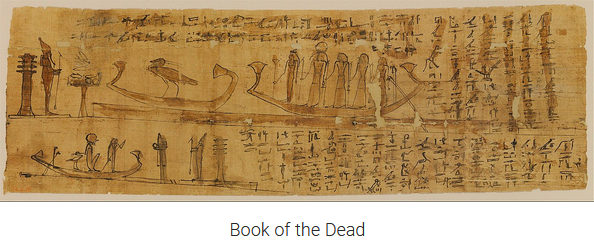eva amálka k......
@AmalLikesToPlay
10 May, 01:41
The Voynich manuscript is an illustrated codex hand-written in an unknown script referred to as 'Voynichese'. Mrs. Irena Hanzíková from Jičín is said to have translated the Voynich manuscript, it should be written in old Czech (the territory of Bohemia in Central Europe). One that no scientists or programs in the world could decipher. The mysterious book contains 240 pages of preserved parchment, it is estimated that there were originally 272 pages. Most of the pages have fantastical illustrations or diagrams, some crudely coloured, with sections of the manuscript showing people, fictitious plants, astrological symbols, etc. The text is written from left to right. The manuscript is named after Wilfrid Voynich, a Polish-Lithuanian book dealer who purchased it in 1912.
It is interesting to me that again several tens of pages were kept secret from the public, here you can download a scan with only 209 pages.
https://www.holybooks.com/...
It is interesting to me that again several tens of pages were kept secret from the public, here you can download a scan with only 209 pages.
https://www.holybooks.com/...

Download: Voynich Manuscript PDF & Codex Serahinianus PDF
Download the two most strange books ever written: The Voynich Manuscript PDF and CODEX Serahinianus . You can download them here in full-length PDF for free!
https://www.holybooks.com/voynich-manuscript-codex-serahinianus-pd/Notice: Undefined index: tg1tga_access in /home/admin/www/anonup.com/themes/default/apps/timeline/post.phtml on line 396
eva amálka k......
@AmalLikesToPlay
10 May, 02:18
In response eva amálka k...... to her Publication
The Egyptian Handbook of Ritual Power-a Book of Magic That Conceals Secrets of a !Lost Christian Sect!
Ancient Egyptian texts abound. The Pyramid Texts and The Book of the Dead are amongst the oldest Egyptian manuscripts, detailing spells and religious rituals relating to death and the afterlife.
The Egyptian Handbook of Ritual Power is a 20-page parchment book written in Coptic, a Greco-Egyptian language first developed in the 2nd century BC. It contains many of the spells and curses common to other texts. However, the book also includes references to a mysterious central figure called Baktiotha-“the great one…..who is lord over the forty and nine kinds of serpents” who is not found in any other text.
Baktiotha is even more puzzling as he sits side by side with Christian figures such as Christ and curiously, Seth, the third son of Adam and Eve, who in one invocation is “Seth, Seth, the living Christ.”
https://www.holybooks.com/...
Ancient Egyptian texts abound. The Pyramid Texts and The Book of the Dead are amongst the oldest Egyptian manuscripts, detailing spells and religious rituals relating to death and the afterlife.
The Egyptian Handbook of Ritual Power is a 20-page parchment book written in Coptic, a Greco-Egyptian language first developed in the 2nd century BC. It contains many of the spells and curses common to other texts. However, the book also includes references to a mysterious central figure called Baktiotha-“the great one…..who is lord over the forty and nine kinds of serpents” who is not found in any other text.
Baktiotha is even more puzzling as he sits side by side with Christian figures such as Christ and curiously, Seth, the third son of Adam and Eve, who in one invocation is “Seth, Seth, the living Christ.”
https://www.holybooks.com/...
Notice: Undefined index: tg1tga_access in /home/admin/www/anonup.com/themes/default/apps/timeline/post.phtml on line 396
The five parts of the Egyptian soul were the Ren, the Ba, the Ka, the Sheut, and the Ib.
The Ren was the name given to a person at birth. Egyptians believed it was part of a person's soul and that it would live for as long as that name was spoken or the person remembered.
The Sheut was the person's shadow or silhouette. Egyptians believed that the shadow, somehow, contained part of the essence of the person.
The Ib was a metaphysical heart and to ancient Egyptians it was the focus of emotion, thought, will and intention. They understood it as the seat for the soul.
The Ba was the notion of personality. Everything that makes a person unique.
The Ka was the vital fire or spark, that distinguishes living people from dead (warm vs. cold).
--Kreann
The Ren was the name given to a person at birth. Egyptians believed it was part of a person's soul and that it would live for as long as that name was spoken or the person remembered.
The Sheut was the person's shadow or silhouette. Egyptians believed that the shadow, somehow, contained part of the essence of the person.
The Ib was a metaphysical heart and to ancient Egyptians it was the focus of emotion, thought, will and intention. They understood it as the seat for the soul.
The Ba was the notion of personality. Everything that makes a person unique.
The Ka was the vital fire or spark, that distinguishes living people from dead (warm vs. cold).
--Kreann
12:51 PM - Jul 09, 2023
In response eva amálka k...... to her Publication
Only people mentioned by AmalLikesToPlay in this post can reply

